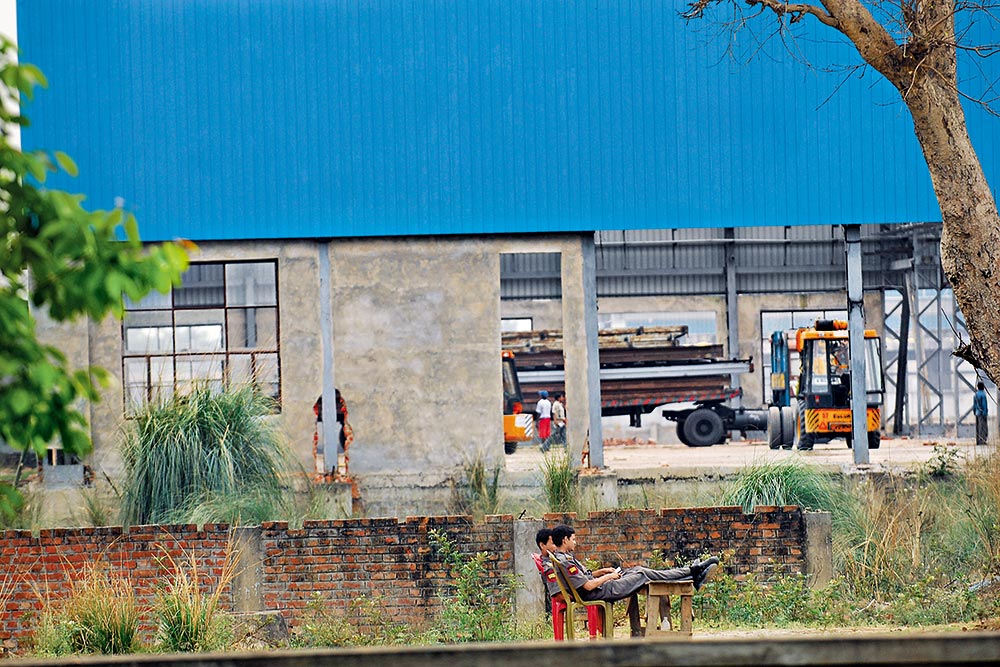In the vast tapestry of India’s industrial landscape, certain regions have historically faced significant challenges in keeping pace with the rapid industrialisation witnessed in more developed areas. This economic divergence has often been attributed to a variety of factors, including infrastructure deficiencies, inadequate access to capital and a lack of skilled labour. Against this backdrop, the call for subsidies to bolster industrial growth in these economically backward states echoes with urgency.
Dating back to India’s early post-independence era, the nation embarked on a journey of industrialisation with a vision to transform its agrarian economy into a modern industrial powerhouse. However, the fruits of this endeavour were not uniformly distributed across the vast expanse of the country. States grappling with socio-economic disparities found themselves lagging their more prosperous counterparts in the race for industrial growth.
In recent years, the discourse around subsidies for industries in economically backward states has gained traction, fuelled by mounting evidence of the widening economic divide. Proponents argue that targeted subsidies can catalyse industrial growth in these regions, creating employment opportunities, fostering entrepreneurship and ultimately driving inclusive economic development.
Bridging the Gap
Against the backdrop of India’s ambitious goal to become a $10-trillion economy, the imperative to bridge the gap between its industrially advanced and backward states has assumed greater significance. As policymakers deliberate on the contours of a revamped industrial policy, the question of subsidies for industries in backward states emerges as a pivotal point of contention, holding the potential to reshape the economic landscape of the nation.
In the last 10 years of the Modi government, several schemes and initiatives for industrial development, such as the Make in India initiative, Industrial Corridor Development Programme, Ease of Doing Business, National Single Window System, PM Gati Shakti National Master Plan, National Logistics Policy, Production-Linked Incentive scheme and Indian Footwear and Leather Development Programme have played an important role in boosting India’s economy.
But, what about industry in backward states? The Indian industry needs subsidy policies for employment and socio-economic development.
Industrial policy, the notion that governmental intervention can wield substantial influence in developing specific sectors of the economy for diverse objectives, is experiencing a resurgence on a global scale. A prominent illustration is the United States Inflation Reduction Act, which employs state subsidies, tax incentives, loans and grants to bolster industries deemed strategically vital by the US. India is also actively embracing this trend, exemplified by its introduction of production-linked incentive (PLI) scheme in 2020, which aims to boost local manufacturing and attract investments in 14 sectors.
But how do these domestic-focused policies fit into industry-backward states?
Infrastructure development forms the bedrock of industrial growth, facilitating efficient transportation of goods and access to markets. By ramping up infrastructure projects in backward states, the government aims to create an enabling environment for industrial expansion.
In a bid to boost industrial growth and development across the nation, the government is gearing up to implement policies aimed at establishing industries in backward states. This strategic shift underscores a concerted effort to address regional disparities and promote inclusive economic growth.
Need Tailored Policies
Over the past decade, there has been a surge in industrial activity, with millions of factories mushrooming across the country. However, a closer examination of the data reveals a stark imbalance in the distribution of these establishments. While southern states have witnessed significant industrial growth, states like Jharkhand, Bihar and Uttar Pradesh have lagged. From 2014 to 2020, a staggering 14 lakh factories were established, marking a period of remarkable industrial expansion. Notably, nearly six lakh of these factories found their footing in the southern states, showcasing the region’s robust industrial ecosystem. However, the disparity becomes glaring when juxtaposed with the mere 1.3 lakh factories established in Jharkhand, Bihar and Uttar Pradesh combined.
Streamlining regulatory processes and enhancing the ease of doing business will attract investments and spur entrepreneurship in these regions.
Simplified procedures for obtaining permits and licences, coupled with transparent governance mechanisms, will bolster investor confidence and catalyse industrial development. In parallel, investing in skill-development programmes tailored to the needs of industries will equip the local workforce with the requisite skills, enhancing their employability and fostering a culture of innovation and productivity.
Integration with the World
If successful, India will build a successful indigenous manufacturing base capable of exporting too. On the other hand, if the manufacturing of the inputs does not become globally competitive despite the tariff protection, India will have lost the chance to integrate even the downstream industry into the value chains of “Factory Asia”.
The distinction between industrial policy and import substitution needs to be understood. Import substitution can lead to greater reliance on domestically produced intermediates—thereby promoting indigenous manufacturing—but need not lead to greater global value chain integration. Hence, the objective of greater integration with global value chains through the PLI schemes is uncertain. Whether these policies will propel India’s manufacturing sector and help overcome the “jobless growth” remains to be seen.
Over the past decade, there has been a notable surge in industrial activity, with millions of factories mushrooming across the country. However, a closer examination of the data reveals a stark imbalance in the distribution of these establishments. This glaring gap in industrial development underscores the urgent need for targeted interventions in these backward states.
By aligning domestic-focused policies with the imperative of industrial growth in backward states, the government is charting a path towards balanced and inclusive development. As the nation embarks on this journey, concerted efforts from policymakers, industry stakeholders, and local communities will be essential to unlock the full potential of these regions and propel India towards its vision of becoming a global economic powerhouse.

Shaurya Doval is Governing Council member, India Foundation











 Just one email a week
Just one email a week